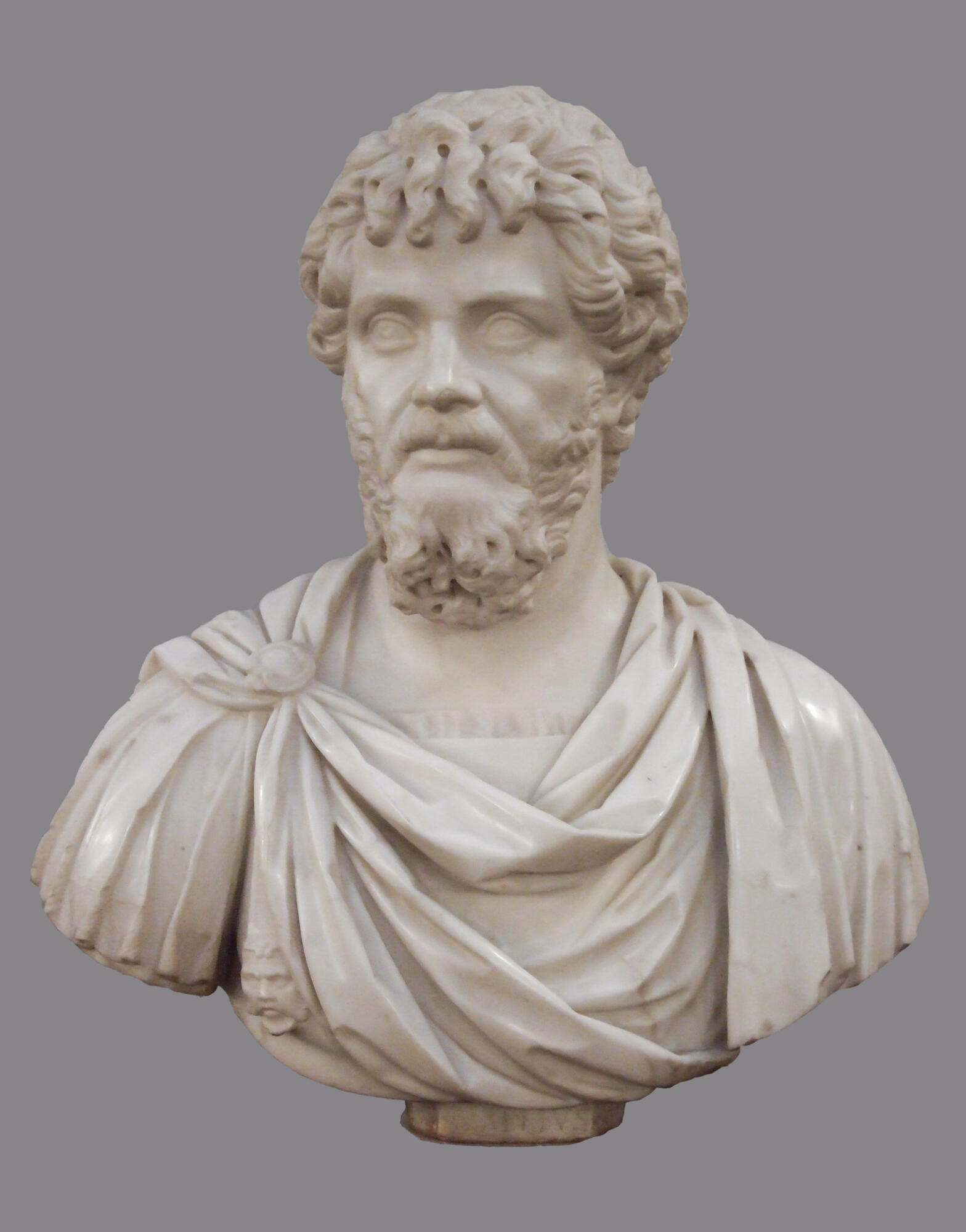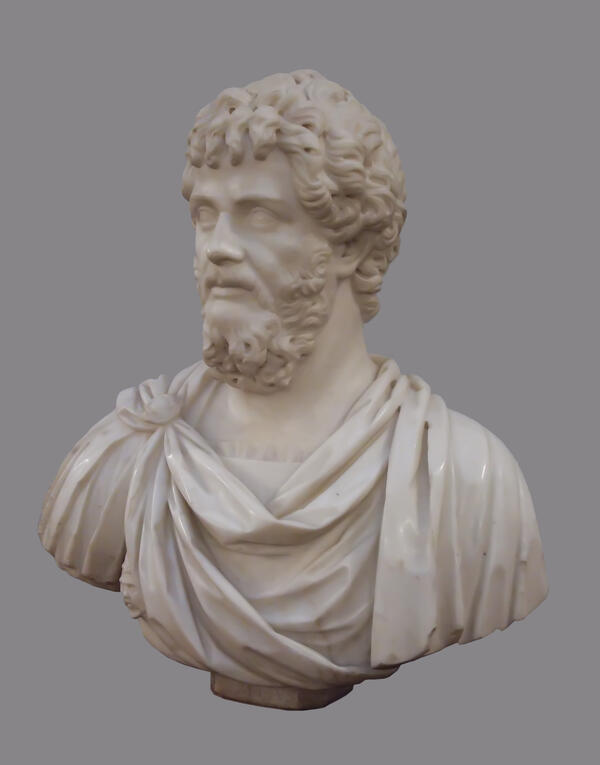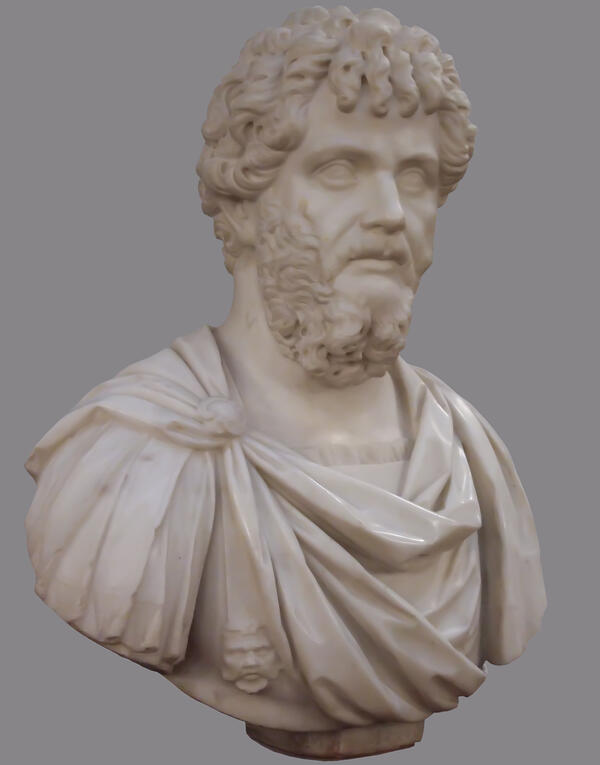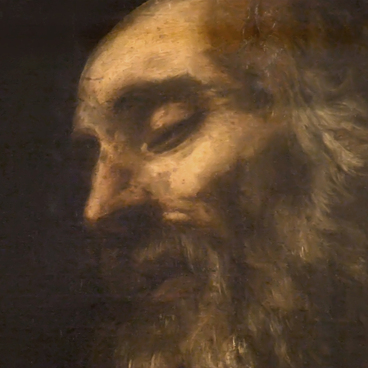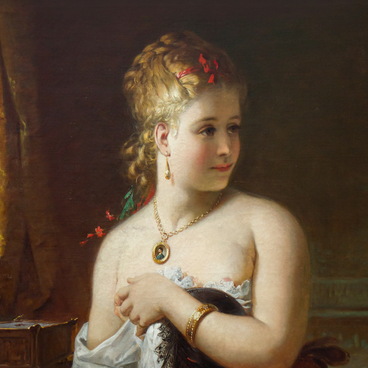The art of Roman sculptural portraiture developed over five centuries. It was one of the leading genres in the art of ancient Rome. The Roman sculptural portrait is notable for its verisimilitude and great historical and artistic significance.
Unlike the Greek sculptural portrait, the Roman one did not try to embody the ideal of beauty, but rather to render the unique features of the model’s appearance, character and personality. When copying the sculpture of a Roman artist, an unknown sculptor of the 18th century showed the model from several points of view: the front displays restraint and courtesy, the left side — reflection, and the right — the Roman resoluteness.
The Roman emperor Lucius Septimius Severus ruled from 193 to 211; that was the time when the empire was in decline. Severus was a cunning, intelligent and strong ruler. He was born in Africa and had an African accent throughout his life, but he could speak Latin and Greek, had a good knowledge of philosophy and astronomy, and was eloquent. Septimius Severus knew how to make people trust him, he was a brilliant military leader, he gave numerous promises that he immediately forgot, and he was cruel. His reign briefly stabilized the empire; he strengthened it, relying in all matters on the army.
The sculptural portrait of Septimius Severus is made of marble. The unique quality of this material is its ability to let light through. Marble seems to glow from within, and its name is translated from Greek as “shining stone.” Septimius is depicted in the protective armor of the Roman legionnaires and the military cloak “paludamentum” which later became the basis of the mantle worn by European kings. The Romans dyed this cloak purple. The cloak features Serapis, the god of the Hellenic population, whose name combined the names of the Egyptian gods Osiris and Apis. Septimius Severus was associated with him.
Unlike the Greek sculptural portrait, the Roman one did not try to embody the ideal of beauty, but rather to render the unique features of the model’s appearance, character and personality. When copying the sculpture of a Roman artist, an unknown sculptor of the 18th century showed the model from several points of view: the front displays restraint and courtesy, the left side — reflection, and the right — the Roman resoluteness.
The Roman emperor Lucius Septimius Severus ruled from 193 to 211; that was the time when the empire was in decline. Severus was a cunning, intelligent and strong ruler. He was born in Africa and had an African accent throughout his life, but he could speak Latin and Greek, had a good knowledge of philosophy and astronomy, and was eloquent. Septimius Severus knew how to make people trust him, he was a brilliant military leader, he gave numerous promises that he immediately forgot, and he was cruel. His reign briefly stabilized the empire; he strengthened it, relying in all matters on the army.
The sculptural portrait of Septimius Severus is made of marble. The unique quality of this material is its ability to let light through. Marble seems to glow from within, and its name is translated from Greek as “shining stone.” Septimius is depicted in the protective armor of the Roman legionnaires and the military cloak “paludamentum” which later became the basis of the mantle worn by European kings. The Romans dyed this cloak purple. The cloak features Serapis, the god of the Hellenic population, whose name combined the names of the Egyptian gods Osiris and Apis. Septimius Severus was associated with him.
